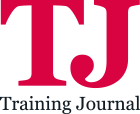Change fatigue is feeling weary, indifferent or resistant towards increasing organisational changes. Steve Macaulay explores how L&D can play a pivotal role in tackling this issue by focusing on emotional wellbeing, resilience and communication, ensuring employees feel supported, valued and capable of navigating transitions successfully in today’s fast-paced business environment
There is a widespread problem in organisations, manifesting itself as the exhaustion many employees are feeling as they face constant change. Companies often use neutral, even positive, managerial language to describe these shifts – words like ‘restructuring’, ‘refocusing’ and ‘going agile’. However, behind these terms lie real disruptions for employees. They must learn new systems, adapt to different roles and initiatives, and often worry about job security.
L&D professionals are well-positioned to address change fatigue by bridging the gap between what the company needs and what employees experience
This constant shifting can lead to stress, burnout and a general resistance to anything new. Studies indicate that a significant portion of the workforce struggles with these challenges, making change fatigue one of HR leaders’ top concerns in change management. The effects can be severe, impacting productivity and even causing employees to leave.
L&D professionals are well-positioned to address change fatigue by bridging the gap between what the company needs and what employees experience. Rather than focusing solely on the technical aspects of change, L&D is able to prioritise the human side of change by acknowledging the emotional impact and providing employees with the tools and support needed to live with change and feel positive about making changes successfully.
Signs of change fatigue
The first step is recognition: change fatigue reveals itself in several ways. Behaviourally, employees may be absent more often, disengaged in meetings and reluctant to embrace new initiatives, often expressing scepticism or resistance.
On an emotional level, anxiety, frustration and apathy become common, fostering a ‘what’s the point?’ attitude and negativity towards work.
In terms of performance, productivity declines, deadlines are missed and mistakes increase as employees struggle to adapt. Even with training, new processes can feel overwhelming.
Physical signs such as persistent fatigue, headaches, sleep issues and team conflicts also emerge as stress takes its toll.
When these signs appear, it is a clear indicator that employees are struggling under the weight of too much change to handle.
How L&D can combat change fatigue
What has L&D to offer in response to this malaise? Resilience training helps employees develop the ability to bounce back from setbacks and adapt to change. It equips them with strategies for managing stress, maintaining a positive outlook and building coping mechanisms.
Personal development of a ‘can-do’ process over time encourages the belief that abilities and intelligences can be cultivated through effort and learning, making employees more open to change and willing to learn new skills.
Change often brings uncertainty, and L&D can equip employees with tools and techniques for steering through it. Training in problem-solving, decision-making and risk management can be particularly useful.
Clear communication is essential during times of change, and L&D plays a key role in developing skills to allow employees to understand the reasons behind any change, how it will affect them and the benefits it will bring. Transparent and frequent communication can help reduce anxiety and resistance.
When roles and responsibilities shift, employees need the right skills to succeed. L&D can provide targeted training programmes to develop the necessary competencies.
Many organisations are also recognising team coaching as a valuable tool for managing change, often integrating it with traditional training. This helps the team find solutions to the specific problems it faces. Embedding coaching into the company culture fosters resilience by offering personalised support, helping employees manage emotional challenges and reframing change as an opportunity rather than a threat. Coaching also enhances adaptability by clarifying the purpose of change and encouraging flexibility.
Companies successfully managing change through HR and L&D actions
Some prominent companies have taken significant steps to address employee concerns during change, doing these in their own way. Under CEO Satya Nadella, Microsoft has fostered a growth mindset culture, one that views intelligence, abilities and talents as learnable and capable of improvement through effort, which is supported by continuous learning, reducing resistance and spurring innovation.
Google regularly gathers employee feedback to inform tailored learning programmes, improving satisfaction and adaptability.
IBM’s Think Academy provides personalised training to help employees stay ahead of technological advancements and prepare for the future.
Unilever has implemented agile working practices and mental health support initiatives, helping employees manage stress, improve work-life balance and reduce burnout.
Working within the culture
To reduce the change fatigue impact of many initiatives, L&D should seek to raise the importance of employee wellbeing and the human aspects of change in order to reduce burnout and disengagement. This may call for a cultural shift. In this process, L&D should assess the current culture to tailor communication, build on strengths and address any obstacles that may hinder trust, psychological safety, and open communication.
Change impact decisions should be embedded into organisational norms, with adaptability being rewarded to reduce resistance and present change as a growth opportunity. L&D plays a key role in integrating resilience training into existing programmes, ensuring it is not a standalone initiative. The value of coaching and mentoring for personalised support should be promoted, helping employees build the necessary coping strategies and resilience to thrive amid change. By fostering a supportive environment, L&D helps create a culture where employees feel valued and ready to adapt to and succeed in an evolving workplace.
In reshaping the organisational culture, L&D must adopt a strategic and influential role by working closely with HR to align it with company values, norms and behaviours that support change initiatives. By collecting relevant data, L&D can demonstrate how effectively managing change fatigue can improve productivity, turnover, and profitability.
HR and L&D’s essential role in addressing change fatigue
Recognising and dealing with the human side of change is crucial for achieving sustainable transformation. L&D plays an essential role in reducing the emotional and psychological strain of continuous change by equipping employees with the skills, mindset and support needed to adapt and succeed. Integrating L&D into change management with a human face is not just an add-on—it is essential for long-term organisational success.
Steve Macaulay is an associate at Cranfield Executive Development. He can be contacted at: s.macaulay@cranfield.ac.uk




